ODB is like My Documents on the internet. You store your files there and share it with people. But how will you know as to who can edit what?

Estimated reading time 10 min
Contents
Understand the concept first
Read these articles if you don’t know what is OneDrive for Business.
What exactly is OneDrive?
4 methods of using OneDrive for Business effectively
Related articles:
Confusion: Which method of communication to use when?
The most important feature of Office 2013 – Integration with SharePoint
Remember that you need Office 365 to use OneDrive for Business. Talk to your IT team if you are not sure if you have it. The free OneDrive does not have auditing facility.
Benefits of using ODB
The idea is simple. By storing documents in My Documents, on your own PC or laptop, we lose out on many things. You cannot get the document on another device unless you copy it. If you send the document to someone by mail, you have no control over what happens to the document.
Instead, if you store documents on OneDrive for Business, you can always maintain just ONE copy of the document. It is stored on internet, but only YOU can see it. If you want, you can share the link to the document with others. You decide whether they can view it or edit it. Nobody else can delete it. When the document is edited, previous version is saved automatically. Multiple persons can edit the same document at the same time (Word, PowerPoint, Excel, OneNote). In short, it is a dream come true for storing documents and working with others.
How do you know who did what?
If you send a copy of your document to someone by mail, you have no idea what that person is doing with it. If you store it on ODB and share it with someone, you have two ways to know what happens to the document. You can create an alert or you can activate the auditing.
If you create an alert – SharePoint will inform you about who did what by sending a mail.
If you enable auditing – the entire audit trail will be available on the server. Usually you cannot activate the auditing nor can you see the contents of the audit trail. However, ODB is a special case.
In this article we will cover the auditing – because it is more relevant from legal point of view. Alerts are more useful at an individual level. We will cover those in the next article.
Enabling auditing: Step by Step procedure
As of now, most of the documentation of ODB does NOT mention auditing. A recent blog post has declared that auditing will be made available for ODB soon.
In any case, this method works.
Go to ODB and click on the gear icon – choose Site Settings.
Lots of settings are shown. Open Site Settings.
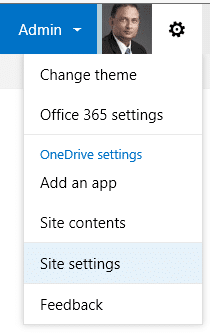
These settings are for the current site. Because we have opened OneDrive for business, you are actually inside something called My Site – a special SharePoint site which is created just for you. The auditing settings are not available here. You have to go to the higher level site to configure auditing. Click on Site collection auditing settings.
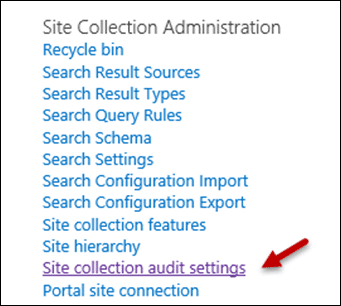
Now configure the settings.
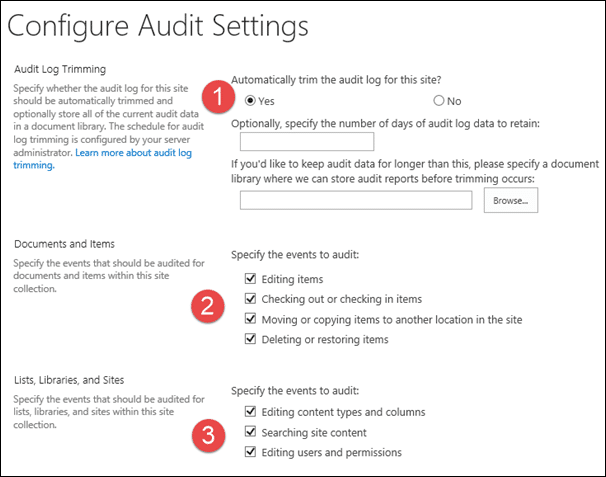
Automatic trimming is a good idea to minimize storage space. If you want very strict auditing, do not activate automatic trimming.
Auditing can be done for documents and items. Activate all those you need. Notice that adding items is not an auditable thing. Why? Because this is ONEDRIVE. You are the ONLY ONE who can add items there
If required, enable the third section options as well. Usually that is NOT required because only you can do these things.
Click Ok and save. That’s it.
Now all actions are being audited.
How to view the audit trail
If this was a regular SharePoint site, you would see the reporting menu option.
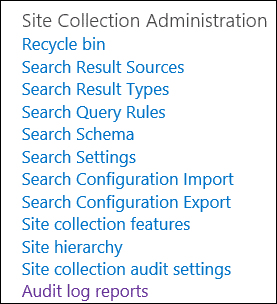
But this is OneDrive. So that view reports option is missing.
Not to worry. There is a way. Login to OneDrive. Now your web address will be something like this…
Now you have to do this manually. At the time of writing this article, there was no menu option to do this on my Office 365 tenant. But don’t worry. It works. Hopefully the menu option will be added soon.
Notice that the word layouts starts with an underscore – it is _layouts.
This will open a reports page.
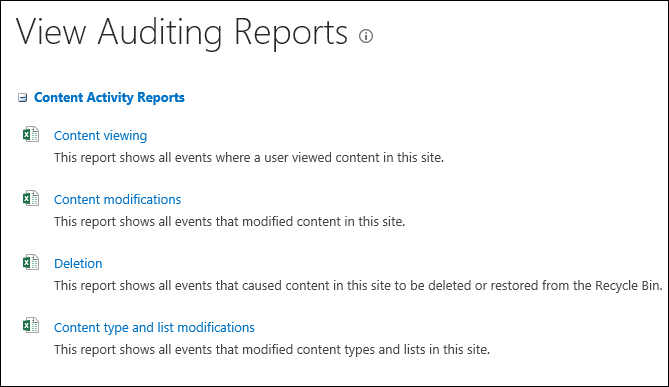
Click on any report. In this case I am going to show the Content Modification report. The report is an Excel file. It needs to store it somewhere. Choose the location. The location must be on the SharePoint – not on local PC or laptop.

Click Browse button and choose the location.
It is a good idea to create a separate folder for this. A separate document library is also a good idea – so that it does not clutter your OneDrive for Business folders. In this case I have created a folder Audit Reports under ODB. Choose the folder.
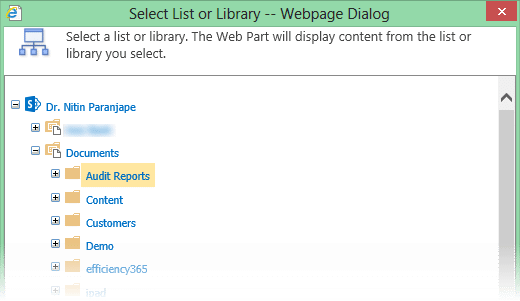
The report will be saved in the selected place. Choose the Click to view the report option to open it in Excel. There are two sheets – raw data and pivot table.
The pivot table contains a filter on the site. Rows contain file / item names. Columns contain the update event count.

The raw data sheet contains tabular data with more details for each audit trail item.

There is also a custom report option where you can choose which libraries are included, date range and events to be included.
When to use Auditing Report
Auditing is used as a method of documenting business critical actions and ensure accountability of persons who performed the action.
So what do you do if you want to know who has edited your documents? Yes – you have given permissions to specific people. But that does not mean each one of them is going to edit the documents. In this case, what you need is more of a notification rather than an audit trail. That is available using Alerts. We will cover alerts in the next article.
***



9 Responses
Fantastic post Mr. Nitin ! It works like a charm 😉
You are right about the alerts, as they are also very important if you want to follow very fast what is happening on your docs.
I must make a correction. i worked like a charm until the part where I had access to the page where there is the possibility of having a “content activity report”. Choosing “content viewing” always gives an error saying that “This report doesn’t contain any data. Make sure that the data of this report are being captured by the current auditing definitions”. I believe this is due to the fact that in the “Audit config settings” there was no option for content vieweing.
Yes. Let me do some more research on this. Will post my findings soon.
Thanks Nuno. Alerts are commonly misunderstood or not known at all. Those who use it get their mailbox flooded and then they shut it off. It is all or none! Knowing “how the feature works” is only half the story. “When to use it in which way” is the more important part of learning – it is “Applied Learning”. Unfortunately, many resources, help files and books do not focus on practical scenarios and that is why end users never use great features correctly.
Hi Nitin,
I didn’t understand your answer. I have said that i always get this answer when making a report – “This report doesn’t contain any data. Make sure that the data of this report are being captured by the current auditing definitions”
Hi Nuno
There are four types of reports. Content viewing, modification, deletion and Content type / list modifications. Which report is generating this error?
Hi Nitin,
Sorry but missed your question (don’t know how, but i did it ! ). I was today looking for again for a solution and came here.
It is only in content viewing, all the others work ok.
Hi, For content viewing, it doesn’t work.
Hi Carlos and Nuno
Both of you are right. Content Viewing report does not work. If you see the configuration dialog, there is no content view option. Only in the report output page this option is there. That is why it is not possible to log content reports. Let us hope this facility is added soon.